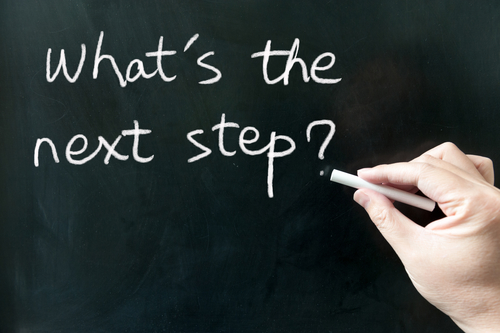Getting Things Done - GTD
The Importance of Next Actions
AUTHOR: Francisco Sáez“Things rarely get stuck because of lack of time. They get stuck because the doing of them has not been defined.” ~ David Allen

In GTD we name those things we have captured and are still not processed as “stuff”. And we do it on purpose, to denote their abstract nature, since we haven’t yet paused to think what they really are—although we may have a preconceived idea. Then, when you are processing or clarifying your stuff, the key question is “Is there any action required?”
No ambiguity here, there are only two possible answers: yes or no. But if the answer is “yes” you still have to answer another important question: What is the next action?
According to David Allen, the next action is the most immediate physical, visible activity that would be required to move the situation toward closure. Obviously, the next action cannot depend on any other action. In addition, in order to be carried out according to the GTD’s four-criteria model for choosing actions in the moment, the next action has to be atomic enough so that it can be done at once and under a single context.
Defining clearly the next action is essential in any efficient productivity system. It provides clarity, peace of mind and focus. If the action hasn’t got a clear and specific meaning, your brain will pass over it in the moment of choosing what to do. Ambiguity is a great friend of stress and procrastination. Also, if you don’t use the correct verbs and words, you won’t get enough motivation to act.
You know when you’re doing it right because you get an immediate feeling of relief each time you decide which is the exact next action necessary to move forward a commitment, external or internal.
However, most people don’t even try doing it. They usually keep the same vague text that they used to collect the stuff. What you capture is the first thing that comes to your mind and it usually has very little to do with the real sequence of actions you need to obtain the result.
You normally capture tasks is a way that apparently seem clear and simple, such as “do my taxes” or “take the car to the mechanic for a checkup”. But which is the actual next action that should appear in your Next Actions list? You can’t do your taxes if you don’t have at least the needed documentation provided by your bank, so probably “download the taxes data from the bank’s website” should be the next action. Before taking your car to the garage you need to know what day and time that you don’t need the car is good for your mechanic, so “call Tom to agree when I can take the car” could be the next action. As you can see, the actual next actions have little to do with the previously collected texts.
As important as properly writing down the next action it is to assign the appropriate context. Surely, you will use the phone many times throughout the day, but you won’t remember that you have to call Tom unless the action “calling Tom to agree when I can take the car” is associated to the “phone” context. If you use a technological tool, it must have a simple way of categorizing actions. If you use paper, your Next Actions list will be made up of different lists, one for every common context.
When you define the next action you have to think and make decisions. But this is no extra work, it’s something that you would have to do one moment or the other anyway—if you don’t want everything to become and urgency. GTD encourages you to do it in the early stage of processing to gain control and eliminate stress. Once you have correctly defined which one is the next action, your brain doesn’t need to think over it again.





No comments